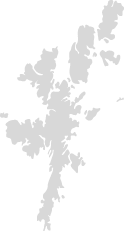Published: 11 March 2014
Final check on new patterns
Over the last few months I have been working on getting several patterns ready for release. This takes time, and motivation.
I start with knitting the item; these days I usually remember to make notes and take photos as I work. For something big, such as Hjorki hooded cardigan, the knitting time could be as much as 100 hours, which may - or may not - include the thinking and preparation time. Once I am happy with the knitted article I need to write the instructions, which often takes longer than the knitting did. The instructions are sent to technical editor, Stephanie Boardman, who checks everything, paying special attention to ensuring that my explanations are easily understood and unambiguous; she also checks the maths.
Steph encourages me to use modern terminology. I baulked at using the word "steek" but I have had to accept that language evolves and in the knitting world outside Shetland it is understood, though few of the older knitters have heard the word associated with anything other than lace knitting. I used to refer to 'graphs' but I have had to change that to 'charts'. Traditionally Shetland knitters learned from seeing techniques used by friends and family, and names for the actions were not needed. Three needle bind off and Kitchener stitch are both techniques I regularly use but I must have passed middle age before I discovered those names! I still call Kitchener stitch grafting which is much less of a mouthful.
As well as using different words I have come to realise (reluctantly) that coloured charts can make life easier for the knitter. I was put off coloured charts when I saw so many where the shapes to be knitted are obliterated by the colours and symbols used on the chart. The first patterns I published on this website have grey and white charts with colour information given for every row/round. For more recent patterns I have provided charts in grey and white (useful for knitters who want to choose their own colours) and in colour so knitters can choose which charts to use. However I am very careful to make sure the shapes to be knitted can still be clearly seen. Depending on feedback I may add colour charts to the first batch of patterns released on this website.
As I get more experienced I find there is less to discuss so the technical editing stage should take less time in future. Recently I was invited to contribute a pattern to Knitting Traditions magazine and was pleased that not much had to be changed when it was edited by one of their editors. It was also good (vital) to have a look at the written instructions after the technical editor had done his/her work as it gave me chance to ensure they had not introduced any errors. The pattern will be in the Spring 2014 issue, and I am eagerly waiting to see my first pattern in a magazine.
While the pattern is being edited I like to experiment with alternative colour combinations so knitters have choices or, perhaps, be encouraged to create their own unique colourways.
In more complicated patterns I include additional photos to help knitters understand the instructions. Instructing at workshops and evening classes is useful as it helps me understand what knitters need and expect from their pattern. My aim is to give really detailed instructions so that knitters can easily reproduce what I have knitted and I have arranged the instructions so that every page does not need to be printed.
Feedback is always appreciated so if you have knitted one of my patterns please do share any thoughts - here and/or on my Ravelry group page.
Subscribe for Updates
Enter your email address to receive updates from hazeltindall.com in your inbox...
About Shetland

Shetland is the most northerly group of Scottish islands. Apart from mainland Scotland, the other near neighbours are Norway to the east and the Faroe Islands to the north west.









